
-
 History of Religions
History of the 3 Monotheistic religions (Judaism, Christianity and Islam) and of the main different Christianity confessions (Roman Catholicism, Eastern Catholicism and Eastern Orthodoxy, Anglicanism and Protestantism)
History of Religions
History of the 3 Monotheistic religions (Judaism, Christianity and Islam) and of the main different Christianity confessions (Roman Catholicism, Eastern Catholicism and Eastern Orthodoxy, Anglicanism and Protestantism)
-
 Pedagogical Approaches
New pedagogical approaches to teach history of religion
Pedagogical Approaches
New pedagogical approaches to teach history of religion
-
 Role of Religions in Civilization
How to didactically promote among students of different confessions, the capacity of a critical analysis and understanding of the role played by religions in the history of mankind
Role of Religions in Civilization
How to didactically promote among students of different confessions, the capacity of a critical analysis and understanding of the role played by religions in the history of mankind
-
 Interreligious Students’ Competences
Set of teaching contents, to be used by teachers to highlight and valorize the universal values of tolerance and universalisms that all Monotheistic religions and religious texts contain to promote and sustain mutual understanding among students
Interreligious Students’ Competences
Set of teaching contents, to be used by teachers to highlight and valorize the universal values of tolerance and universalisms that all Monotheistic religions and religious texts contain to promote and sustain mutual understanding among students
-
 Managing Multi-Religious Classes
Teaching Sources to help teachers dealing with multicultural and multi-religious classes
Managing Multi-Religious Classes
Teaching Sources to help teachers dealing with multicultural and multi-religious classes
-
 Introduction
A comparative review of the liturgical celebrations, ceremonies and dietary rules existing in the different religions.
Introduction
A comparative review of the liturgical celebrations, ceremonies and dietary rules existing in the different religions.
-
 Celebrations
Description and comparative analysis of the celebrations of different religions and confessions
Celebrations
Description and comparative analysis of the celebrations of different religions and confessions
-
 Ceremonies
Description and comparative analysis of the ceremonies of different religions and confessions
Ceremonies
Description and comparative analysis of the ceremonies of different religions and confessions
-
 Dietary Rules
Description and comparative analysis of the dietary rules of different religions and confessions
Dietary Rules
Description and comparative analysis of the dietary rules of different religions and confessions
Events
The Pathway through Religions project has been promoted trough conferences and articles.
Partnership
-
 Contractual Partners
From this section it is possible to access to a description of each contractual partner of the Pathway through Religions project.
Contractual Partners
From this section it is possible to access to a description of each contractual partner of the Pathway through Religions project.
-
 Schools
From this section it is possible to access to the information about the schools involved in the Pathway through Religions Project in the European countries involved.
Schools
From this section it is possible to access to the information about the schools involved in the Pathway through Religions Project in the European countries involved.
-
 Associated Partners
As a result of the exploitation activity a number of associated partners officially joined the project in order to contribute to the improvement of the project impact on their target groups and to ensure the project sustainability by continuing using the project deliverables in the next years.
Associated Partners
As a result of the exploitation activity a number of associated partners officially joined the project in order to contribute to the improvement of the project impact on their target groups and to ensure the project sustainability by continuing using the project deliverables in the next years.
This section of the Pathway through Religions portal provides administrative information for the project contractual partners and for the European Commission and it is password protected.
Ceremonies
Homepage > Training Course > Ceremonies

Description and comparative analysis of the ceremonies of different religions and confessions
Cerimonies
The service includes the reading of Scriptures and sometimes a homily. The gifts of bread and wine are offered and consecrated and the faithful then partake of them in the Sacrament of Holy Communion.
The Divine Liturgy is at the center of Christian Orthodox worship. It is a remembrance of the Last Supper of the Lord Jesus Christ with the apostles, of His redeeming death and resurrection. The liturgy symbolically depicts the more important moments from the earthly life of Christ. It is a bloodless sacrifice of the faithful. The Divine Mystery of the Eucharist recreates the Last Supper as it is believed that the consecrated bread and wine become the real Body and Blood of Christ, and that by partaking of it the faithful jointly become the Body of Christ.
In the early Church there were many liturgical rites. Today only three are canonically used in the Eastern Orthodox Church:
- The Divine Liturgy of St. John Chrysostom - served on most days of the year and as a vesperal liturgy on the Feast of Annunciation.
- The Divine Liturgy of St. Basil the Great – served 10 times during the liturgical year - on the five Sundays of Great Lent, and on Saint Basil's feast day. On the eves of the Nativity and Theophany, and on Holy Thursday and Holy Saturday, it is celebrated as a vesperal liturgy.
- The Divine Liturgy of the Presanctified Gifts - served during Great Lent on Wednesdays, Fridays, and a handful of other occasions, and also on the first three days of Holy Week. IT Does not contain Anaphora (Eucharistic Prayer), as the Holy Gifts having been consecrated and reserved at a previous Divine Liturgy.
The structure of the Divine Liturgy is fixed, although the specific readings and hymns vary with season and feast. The service consists of three interrelated parts:
1. Liturgy of Preparation - This part of the Liturgy is private, performed only by the priest and deacon. It symbolizes the hidden years of Christ's earthly life. The sacred servers enter the church, venerate the icons and put on their ceremonial vestments. The priest and deacon prepare the bread and wine for the Eucharist at the Table of Oblation (Prothesis)
2. Liturgy of the Catechumens – recalls the early years of Christ’s life. It begins with the priest raising the Gospel Book, making the sign of the cross with it over the Altar and proclaiming: "Blessed is the kingdom of the Father and of the Son and of the Holy Spirit, now and ever and unto ages of ages", to which the congregation answers "Amen." After chanting the Gospel, the priest will often give a homily on the Scripture, the season, or the present festival or commemoration. The service continues with the Litany of Fervent Supplication, which is marked by an insistent triple repetition of "Lord, have mercy." On certain days this litany is followed by the Litany for the Departed. The Liturgy of the Catechumens is concludes with praying for the continued growth of the catechumens in faith, leading up to the day of their baptism.
3. Liturgy of the Faithful - represents the suffering, death, and resurrection of Christ. After reciting the Creed and completing the Anaphora (the great eucharistic prayer), the service reaches its culmination with the Mystery of the Eucharist, one of the seven great ecclesiastical sacraments. All the faithful receive the sanctified bread and wine, thus uniting with the Body of Christ and taking a part of the Divine essence. In the past Church, only baptized members who could receive Holy Communion were allowed to attend the Liturgy of the Faithful. Today this is not observed anymore, with very few local exceptions (e.g., Mount Athos).
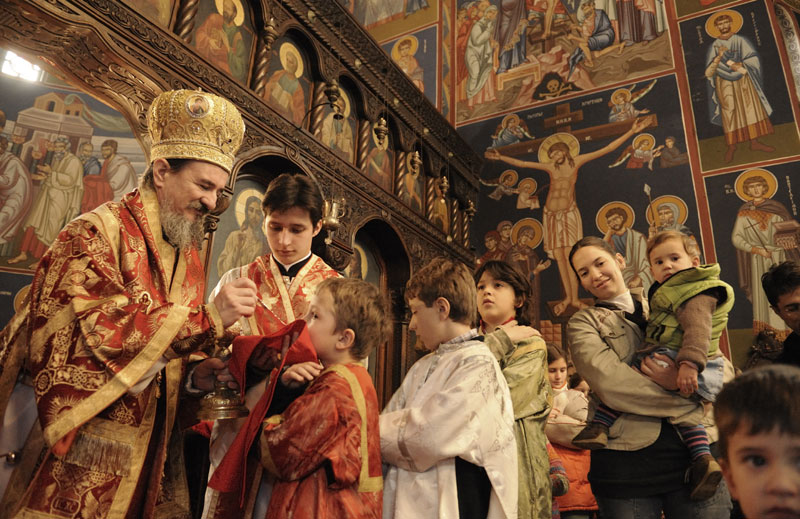
Holy Communion- Children assisting the deacon recieve Holy Communion.
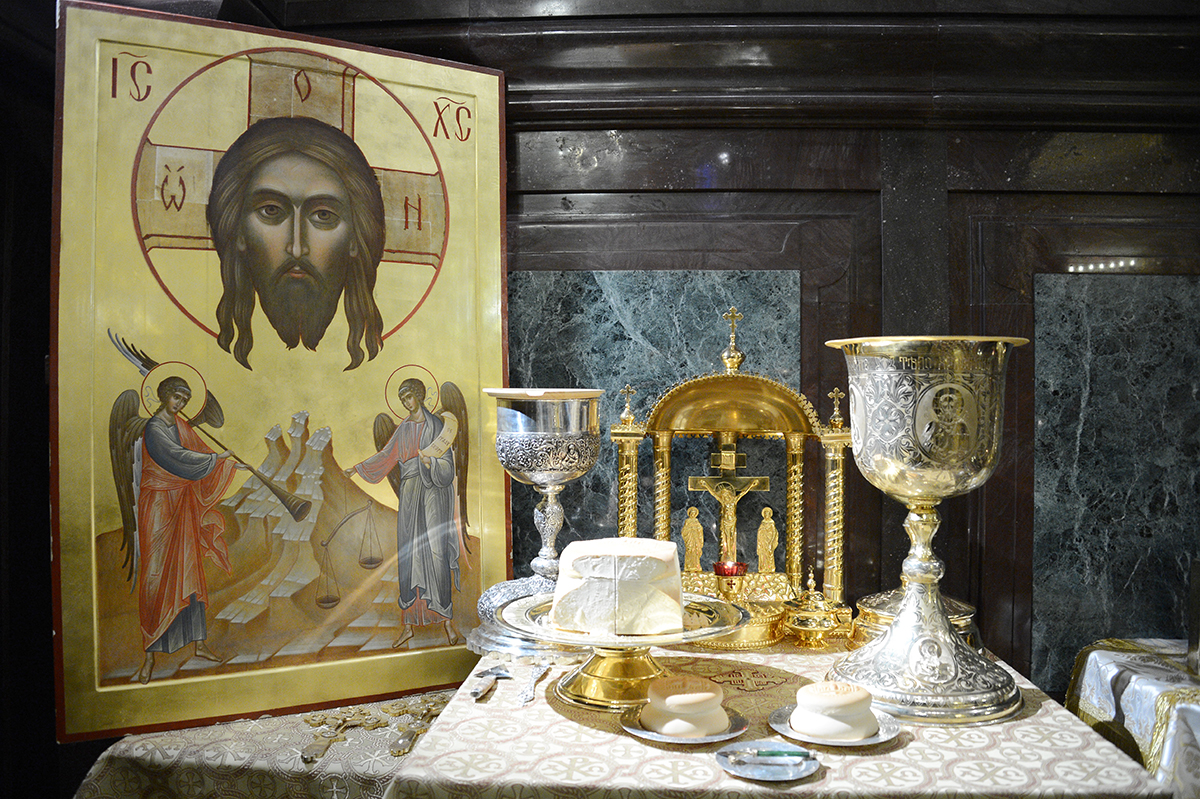
Eucharistic elements - The Gifts (Bread and Wine) prepared during the Liturgy of Preparation before the beginning of the Divine Liturgy.
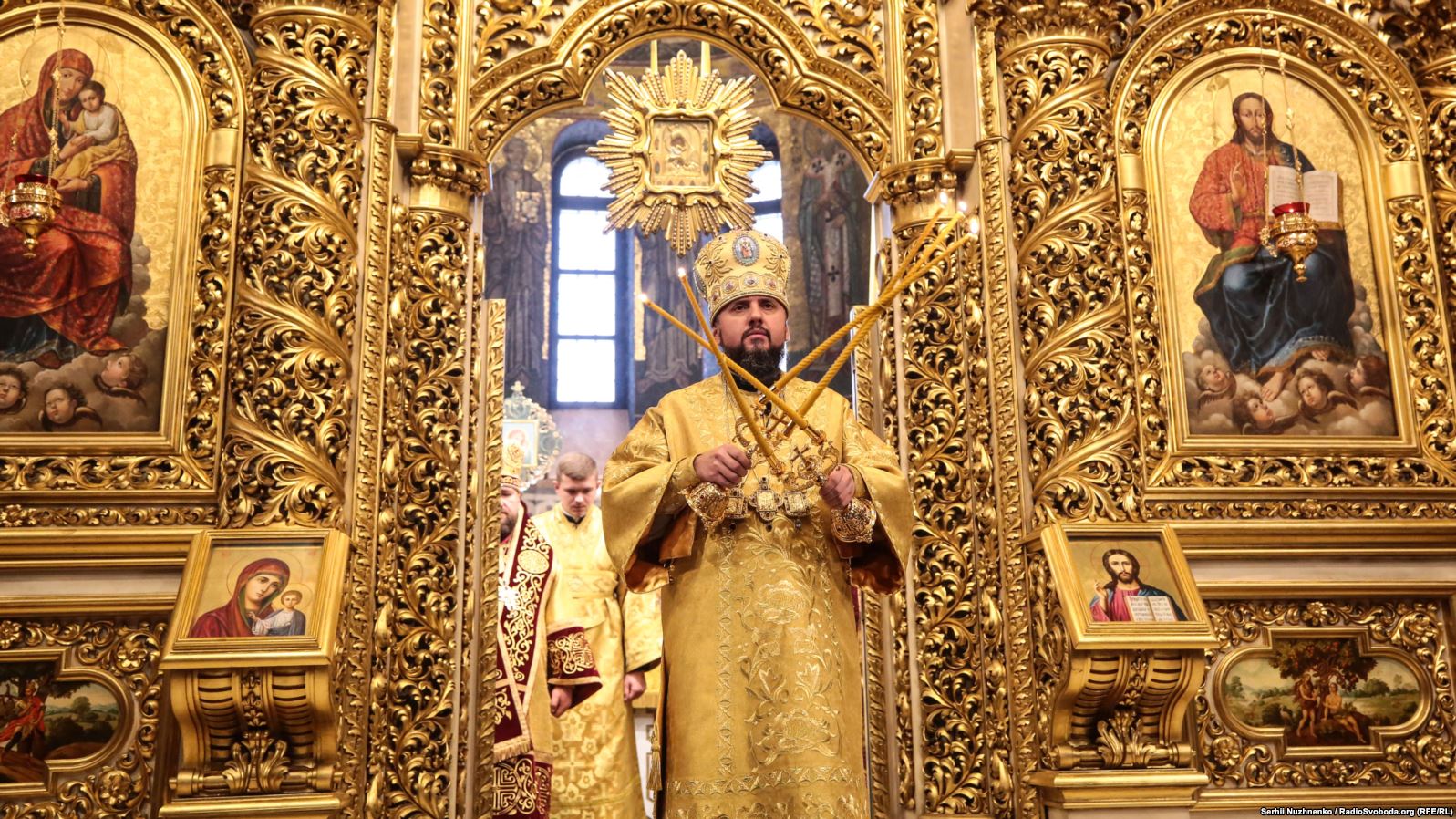
Sunday Liturgy- The head of the Orthodox Church of Ukraine, Metropolitan Epiphany serves Sunday Liturgy at St. Michael's Golden-Domed Monastery in Kyiv on December 16, 2018.
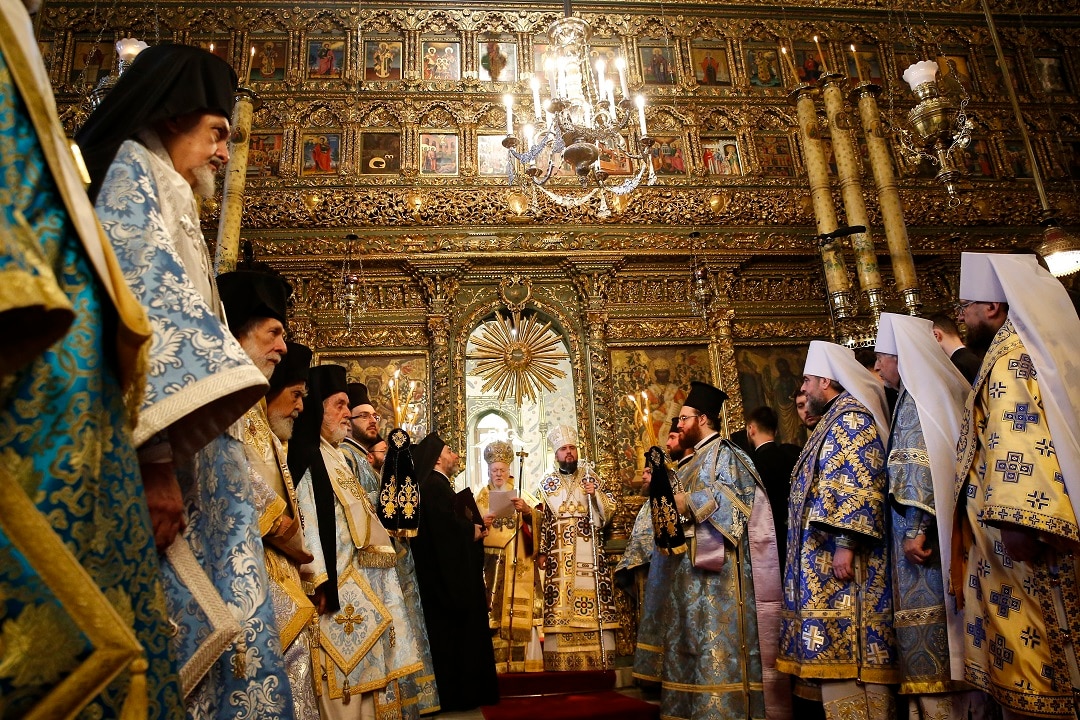
Eastern Orthodox Service- Ukrainian Orthodox Church 2018
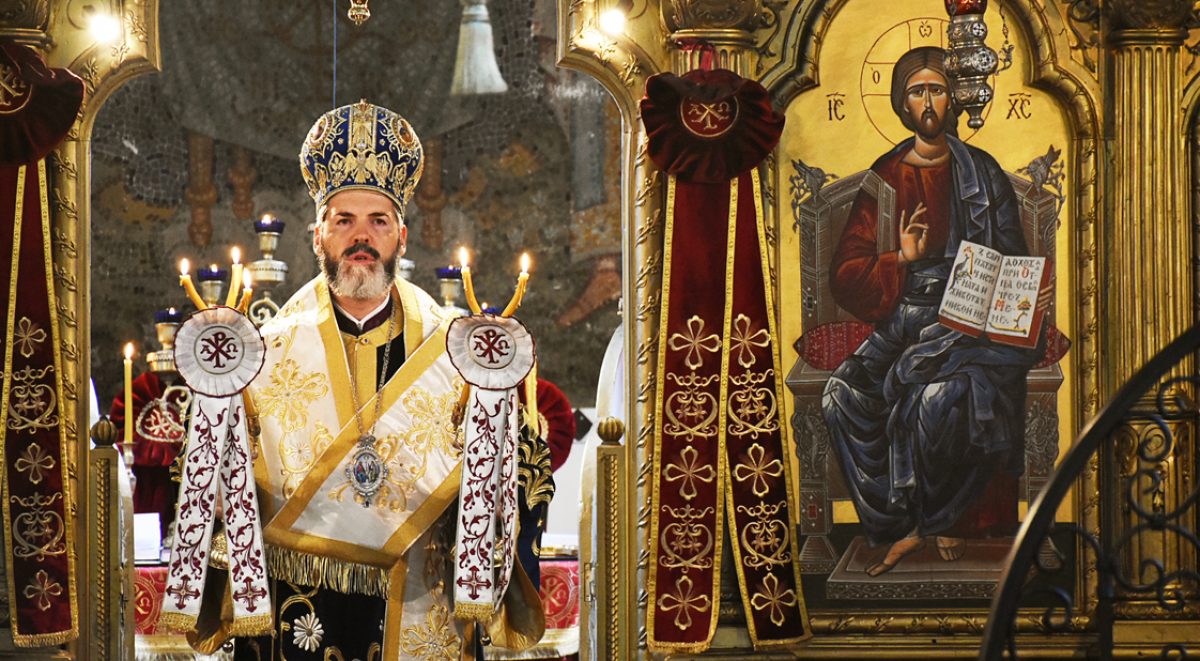
Pentecost afterfeast-Metropolitan. Anthony serving a Divine Liturgy at the St. John of Rila Spiritual Seminary in Sofia, 2018.
An Overview of the Orthodox Divine Liturgy
In this video, -An Overview of the Orthodox Divine Liturgy- Frederica explains why we do things the way we do in the Orthodox Church and what you might experience if you endeavour to visit an Orthodox Church for the first time.
Vested in Grace: The Liturgical Dress of Orthodox Clergy
In this video, viewers will see a deacon, priest, and bishop vest for a Divine Liturgy. Each vestment will be seen, its significance and history briefly discussed, and the prayers the clergy recite when placing the garment on will be shown. The video can be used as a supplement to study of the Divine Liturgy, worship in the Church, or on the roles of the clergy in the Church.
Liturgy Of St. John Of Chrysostom
Performed by Andrey Zaboronok and The Bolshoi Theatre Children’s Choir
Beautiful Orthodox Divine Liturgy
Excerpt of a Russian Orthodox service.
Patriarchal Divine Liturgy at Saint Alexander Nevski Church, Sofia


